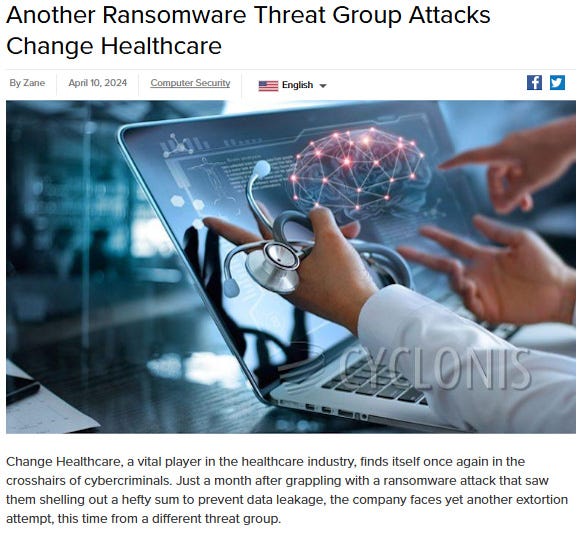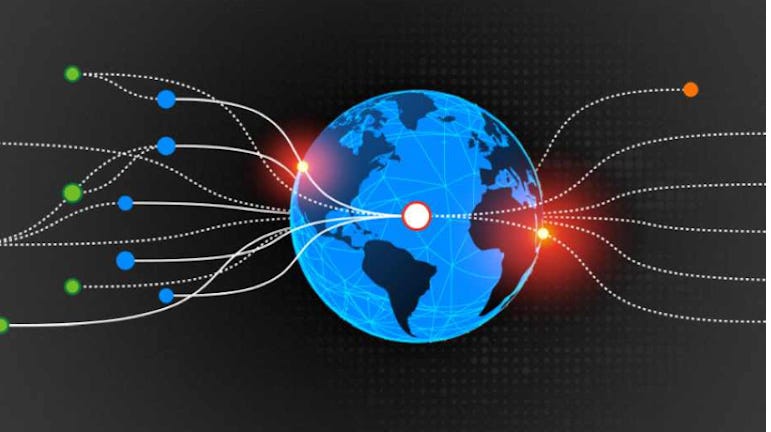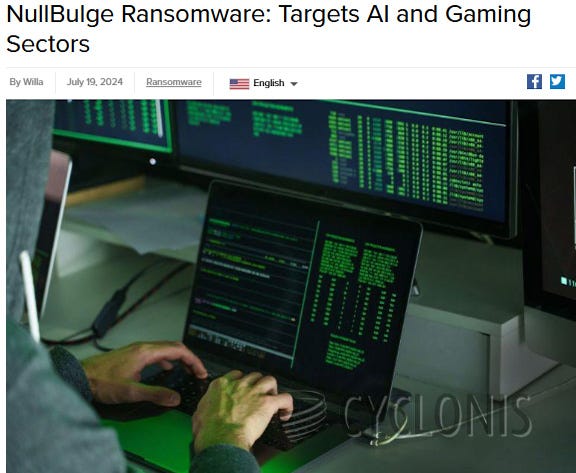CrowdStrike Offers Glimpse of Potential Cyber Apocalypse
CrowdStrike Debacle Offers a Chilling Glimpse of a Dystopian Future of a Cyber Apocalypse Knocking Out Power Grids, Water Supplies, And Communication Networks
By Julio Rivera
July 28, 2024
Cyberattacks have truly become the digital equivalent of natural disasters -- sudden, catastrophic, and terrifyingly inevitable.
The recent CrowdStrike update debacle, which triggered a global meltdown affecting multiple critical sectors, was a glaring example of this modern reality.
Imagine hospitals unable to access patient records, emergency services offline, airports grounded, and banks in utter disarray.
This isn't the plot of a dystopian novel but the grim reality faced over the weekend by the world following the compromised CrowdStrike update.
Reports on the ground detailed a scene of unprecedented chaos that unfolded as critical sectors went dark.
Experts suggest that this catastrophe likely stemmed from skipped checks during the update process -- a simple oversight with disastrous consequences.
It's a scenario eerily reminiscent of the infamous SolarWinds hack, where the attackers exploited the software update mechanism to infiltrate numerous high-profile organizations, including U.S. federal agencies.
To truly grasp the magnitude of the CrowdStrike incident, we must revisit the SolarWinds attack. Both breaches leveraged the Achilles' heel of modern IT infrastructure: the software update.
In the SolarWinds case, the attackers injected malware into a routine software update, enabling them to access the networks of thousands of customers over several months.
The CrowdStrike update, albeit less sophisticated, achieved a similar level of disruption by bypassing critical internal security checks.
Both incidents highlight the vulnerability regarding software updates of even the most robust cybersecurity systems.
No matter how fortified your digital fortress, if the keys to the kingdom are handed over through a trusted update, all bets are off.
And by “all bets,” I literally mean a potential cyber apocalypse.
Imagine a future where cyberattacks aren't just isolated incidents but coordinated assaults that cripple entire nations.
Picture critical infrastructure -- power grids, water supplies, communication networks -- being brought to their knees. The recent CrowdStrike debacle offers a chilling glimpse into this possible dystopian future.
First, imagine healthcare havoc. With hospitals unable to access electronic health records, patient care would grind to a halt, much as it did in the wake of the Change Healthcare attack.
Emergency surgeries, critical treatments, and even routine medical care would become impossible.
Second, envision transportation turmoil. Airports closed, public transport systems paralyzed, and traffic management systems offline would lead to widespread chaos, economic losses, and significant human suffering.
Third, contemplate a financial freeze. Banks and financial institutions offline would trigger a financial meltdown. Transactions would halt, ATMs would run dry, and stock markets would plummet, leading to a global economic crisis.
Lastly, think about the breakdown of emergency services.
Police, fire, and medical emergency services offline would result in a breakdown of law and order, leaving citizens vulnerable and helpless.
The pathway to such catastrophic infiltrations often begins innocuously: a software update like in the case of the CrowdStrike outages, or perhaps a phishing email with a malicious attachment that may be carrying a ransomware strain like Nullbudge.
Regardless of whether it's a deficient update or via conventional hacking attack vectors, these kinds of incidents can result in the installation of Trojan horses like NiceRAT, delivering malicious payloads into the heart of secure systems.
The SolarWinds and CrowdStrike incidents both underscore this peril.
In both cases, trusted software updates were the vectors for widespread compromise, bypassing traditional security measures and opening the floodgates for attackers.
The CrowdStrike fiasco is a major blow to global IT and digital security, coming hot on the heels of the fake Biden administration's ban on sales of Kaspersky security products in the U.S.
It underscores the urgent need for rigorous security protocols and checks in software update processes.
As we move forward, the lessons from these incidents must drive a reevaluation of how we approach cybersecurity -- because in the digital age, a cyberapocalypse might just be an update away.
While CrowdStrike’s breach has been contained, the parallels with SolarWinds serve as a stark reminder of our vulnerabilities.
It's time to fortify our defenses, scrutinize our software updates, and brace for the inevitable -- because when updates attack, the fallout can be catastrophic.
Additionally, in the aftermath of the CrowdStrike incident, the focus must shift to preventative measures and the establishment of robust cybersecurity frameworks.
Companies must implement rigorous internal verification processes for software updates, ensuring that each patch or update undergoes multiple layers of comprehensive scrutiny before deployment.
Furthermore, investing in advanced threat detection systems that can identify and neutralize malicious activity at the earliest stages is crucial.
Governments and international bodies must also play a role by setting global cybersecurity standards and facilitating information sharing among nations, especially as we see the rise of Artificial Intelligence in real time.
In fact, even Elon Musk has called for heightened AI regulations.
These collaborative efforts can lead to the development of more sophisticated defense mechanisms, reducing the risk of widespread disruptions caused by attacks like those on SolarWinds and CrowdStrike.
The recent CrowdStrike catastrophe, echoing the devastation of the SolarWinds attack, serves as a clarion call for heightened vigilance and aggressively proactive cybersecurity measures.
The stakes are too high to ignore the lessons from these incidents.
A cyberapocalypse, once the stuff of science fiction, is now a tangible threat that requires immediate and sustained attention.
The time to act is now, before the next update triggers another digital disaster.
READ MORE:
Global IT outage hits companies around the world as planes grounded and train services affected
WEF Insider: Imminent ‘False Flag’ Cyber Attack Will Disrupt 2024 Election
Share or comment on this article.
Your support is crucial in exposing fake news and in helping us defeat mass censorship.








